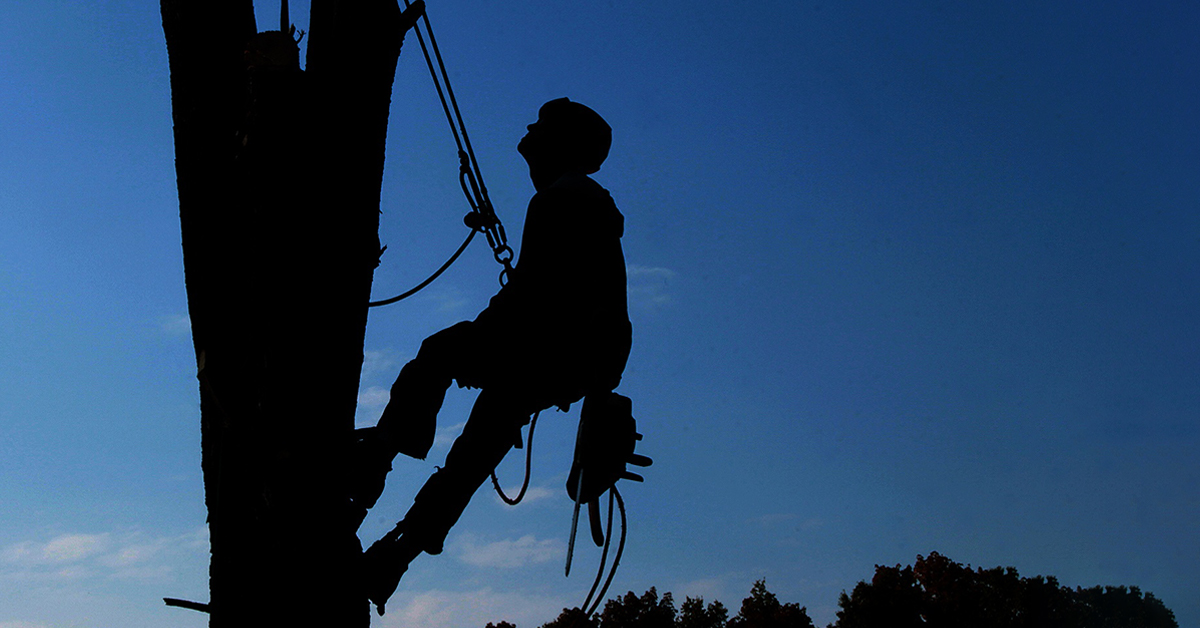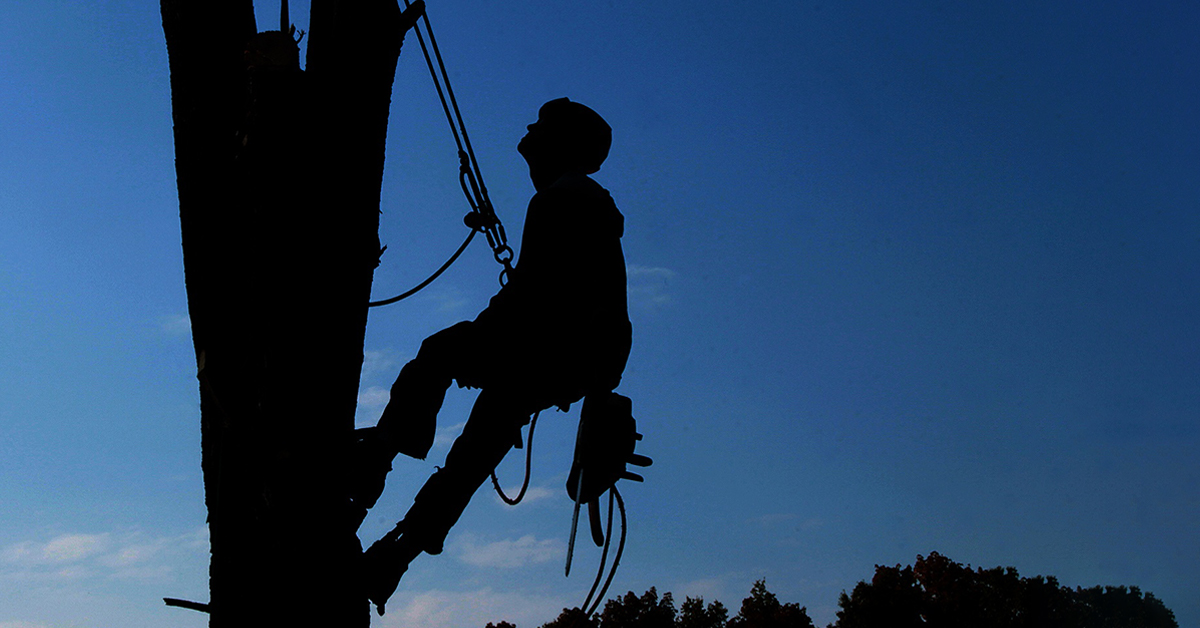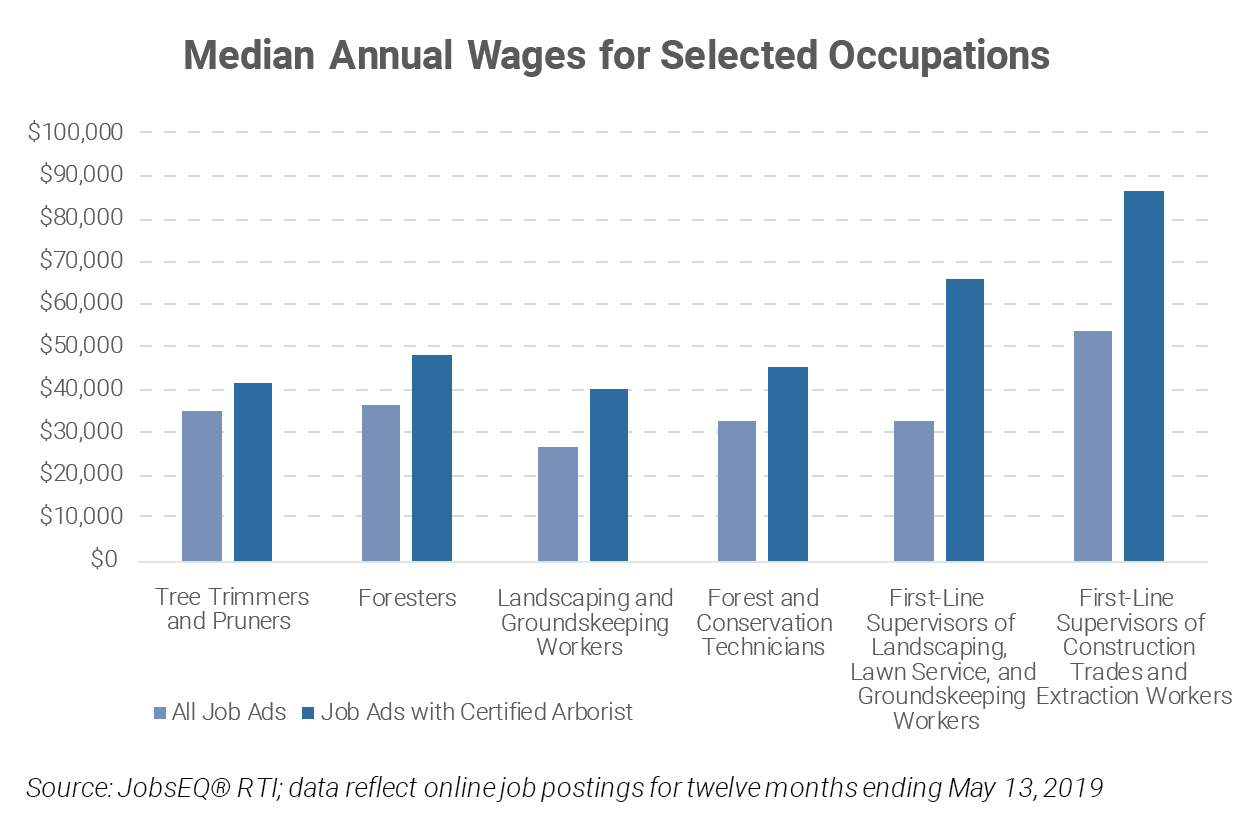Certified Arborist

By Former Chmura Staff |
Credentials are designed for professionals with all levels of education. Some can be earned by those with a high school diploma, and occasionally not even a diploma is needed. Others, however, require the applicant to first earn a college degree. The International Society of Arboriculture (ISA) offers such a credential—Certified Arborist.
The ISA offers several credentials in tree care, which often appear as requirements in arboriculture job postings. There are also many job ads which don’t explicitly mention one of these as a requirement, but applicants would still benefit from the knowledge and experience that these certifications represent. Over sixty percent of U.S. municipalities “either have ISA-credentialed employees on staff or hire ISA credential holders to assist with tree care.”[1]
Of the credentials offered by the ISA, Certified Arborist is by far the most popular. Eighty-five percent of the nearly 37,000 ISA certifications that were active at the end of fiscal year 2017 were Certified Arborists.[1]
"Of the credentials offered by the ISA, Certified Arborist is by far the most popular."
Being a Certified Arborist is required for certain jobs. According to online jobs data from JobsEQ’s RTI, over 1,600 job ads that list Certified Arborist as a requirement were posted in the past year.[2]
A few occupations comprise the bulk of these ads. Additionally, Certified Arborist jobs tend to offer higher wages than the average jobs in these occupations.
Making up a third of the job ads that requires the Certified Arborist certification, the most common occupation is tree trimmers and pruners. The median wage of all tree trimmer and pruner job postings over the past twelve months is approximately $35,000. With the Certified Arborist credential, the median wage is twenty percent higher, at about $42,000.
The next five most common occupations together account for another fifty percent of the jobs needing this certification. For each of these occupations, offered wages are generally higher when advertised in conjunction with this credential.
People in these occupations who hold the distinction of being a Certified Arborist stand out against those with only a degree. Getting certified requires not just a relevant degree, but also three years of work experience in arboriculture and passing the exam.[3] On top of that, this certification must be renewed every three years: Certified Arborists must earn thirty ISA Continuing Education Units or retake and pass the exam.[4] This ensures that those with active certifications maintain up-to-date knowledge.
[1] https://www.isa-arbor.com/Portals/0/Assets/PDF/2016-17-Annual-Report.pdf
[2] US online job postings active at any point in the twelve months preceding May 13, 2019, filtered for those that list Certified Arborist as a requirement.
[3] https://www.isa-arbor.com/Credentials/Types-of-Credentials/ISA-Certified-Arborist
[4] https://www.isa-arbor.com/Credentials/Maintaining-Credentials
Subscribe to the Weekly Economic Update
Subscribe to the Weekly Economic Update and get news delivered straight to your inbox.

